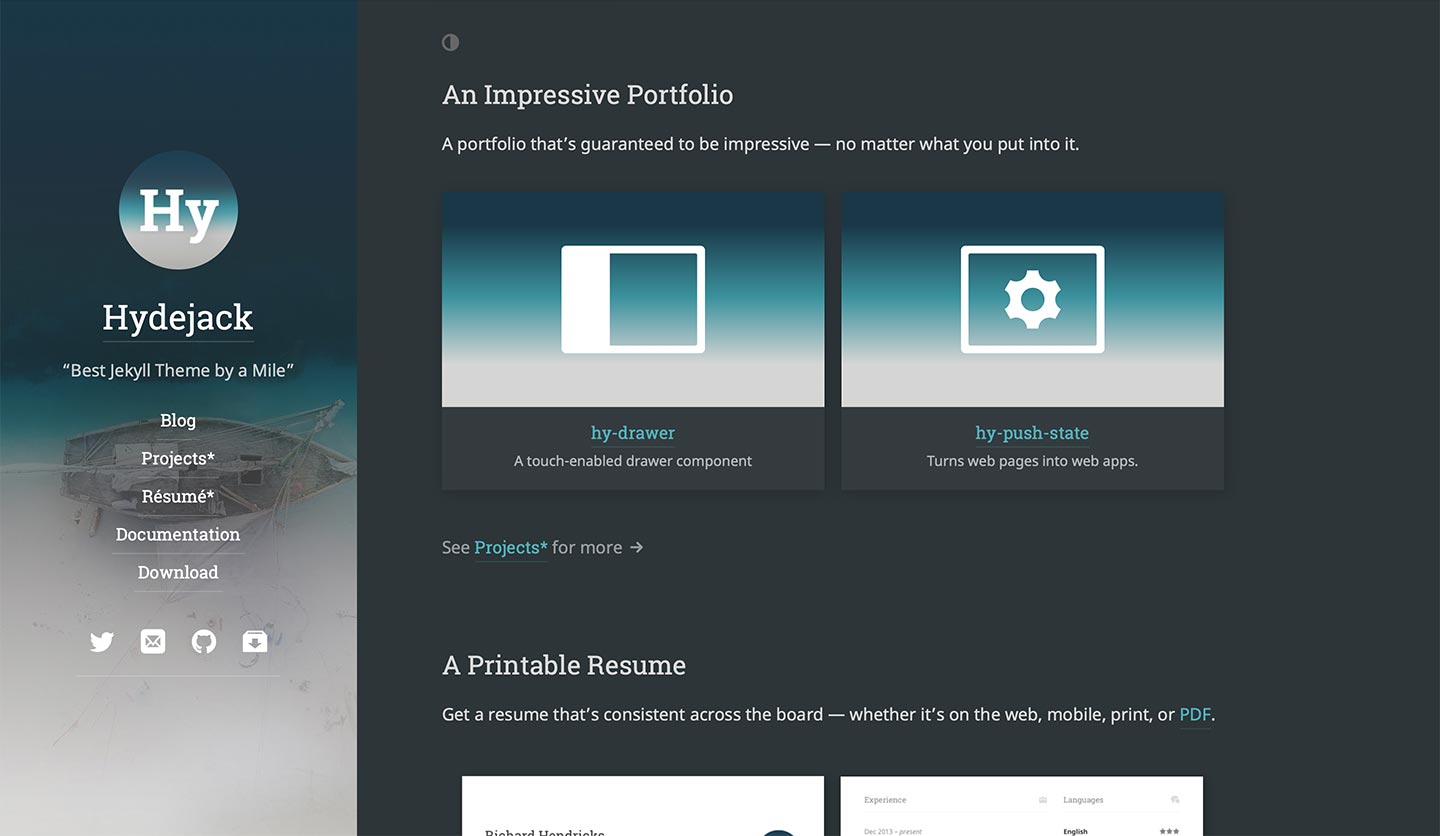Introducing Dark Mode
in My Blog
Like many people, I’m a sucker for is dark UI themes, whether it’s Twitter, macOS, or code editors. I even built an addon for Atom that automatically switches between light and dark based on sunset and sunrise.
When I was playing around with Unity, I even considered a subscription just so I could use the dark theme, which is exclusive to subscribers. Following this line of thought, I’ve added a Dark Mode to the PRO version of Hydejack.
 This is what it looks like!
This is what it looks like!
A unique challenge with regards to Hydejack was its color customization feature. As it turns out, a generic gray does not look good when combined with many accent colors, while a slightly tinted gray only looks good with a small range of accent colors.
To solve the problem, Hydejack’s Dark Mode adjusts the background based on the theme_color. This property can be set for the entire site, or individual pages just like accent_color. It also adjusts the UI of many browsers that support the Web App Manifest API, making the whole experience even more seamless.
 Dark Mode adjusts to a different accent colors.
Dark Mode adjusts to a different accent colors.
While it’s not feasible to enable Dark Mode based on a visitor’s exact sunrise and sunset times1, site authors can opt-in to enable Dark Mode based on a visitor’s local time.
Site authors can also enable Dark Mode by default and/or hide the light switch:
hydejack:
dark_mode:
# Set to `true` to always use the dark theme.
always: false
# Set to `true` to use the dark theme based on visitors' local time.
dynamic: true
sunrise: 6
sunset: 18
# Set to `true` to allow visitors to switch between light and dark mode.
icon: true
Dark Mode is now available for buyers of the PRO version.
This would require visitors’ permission to read their geolocation, which is not reasonable or practical for this use case. ↩︎